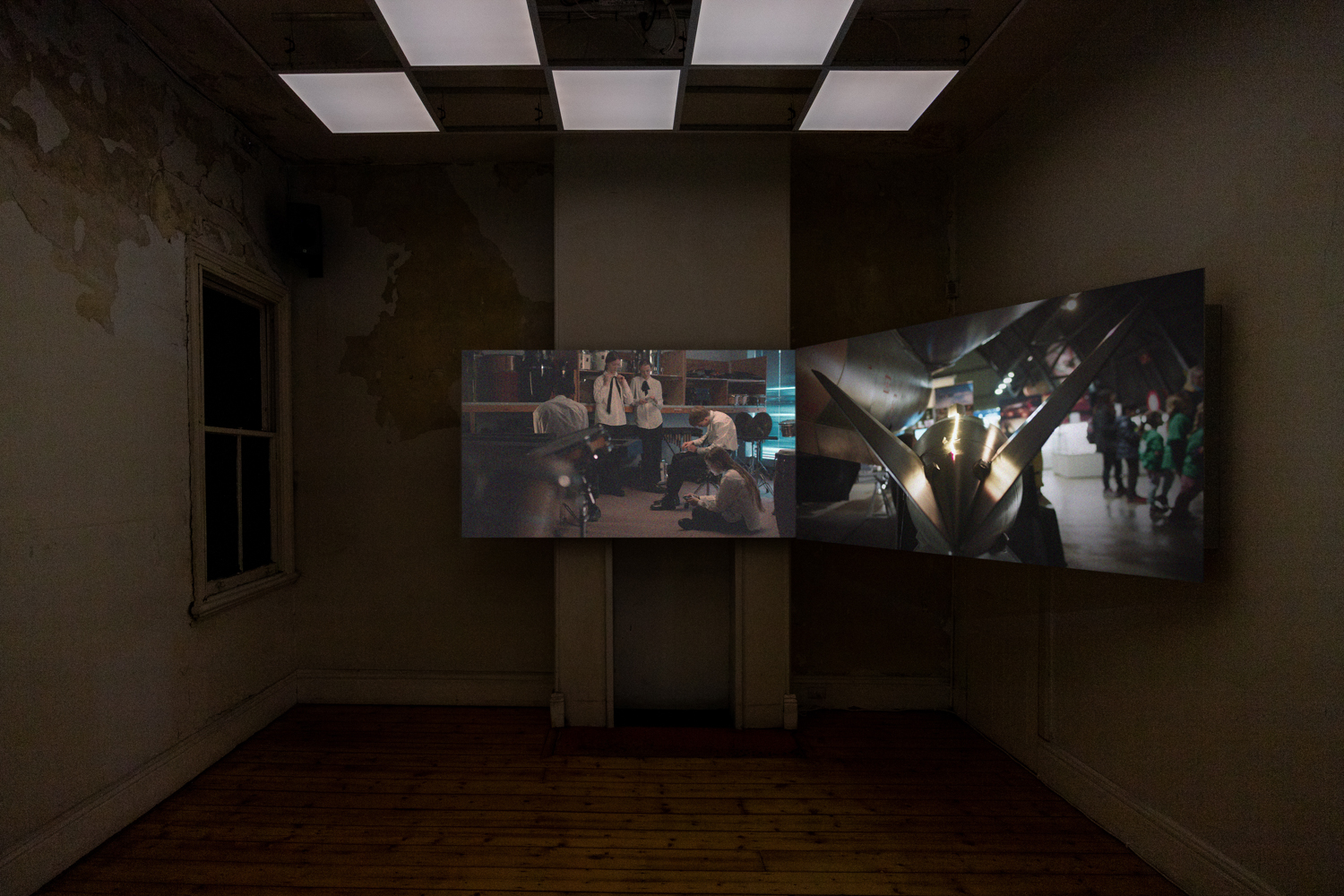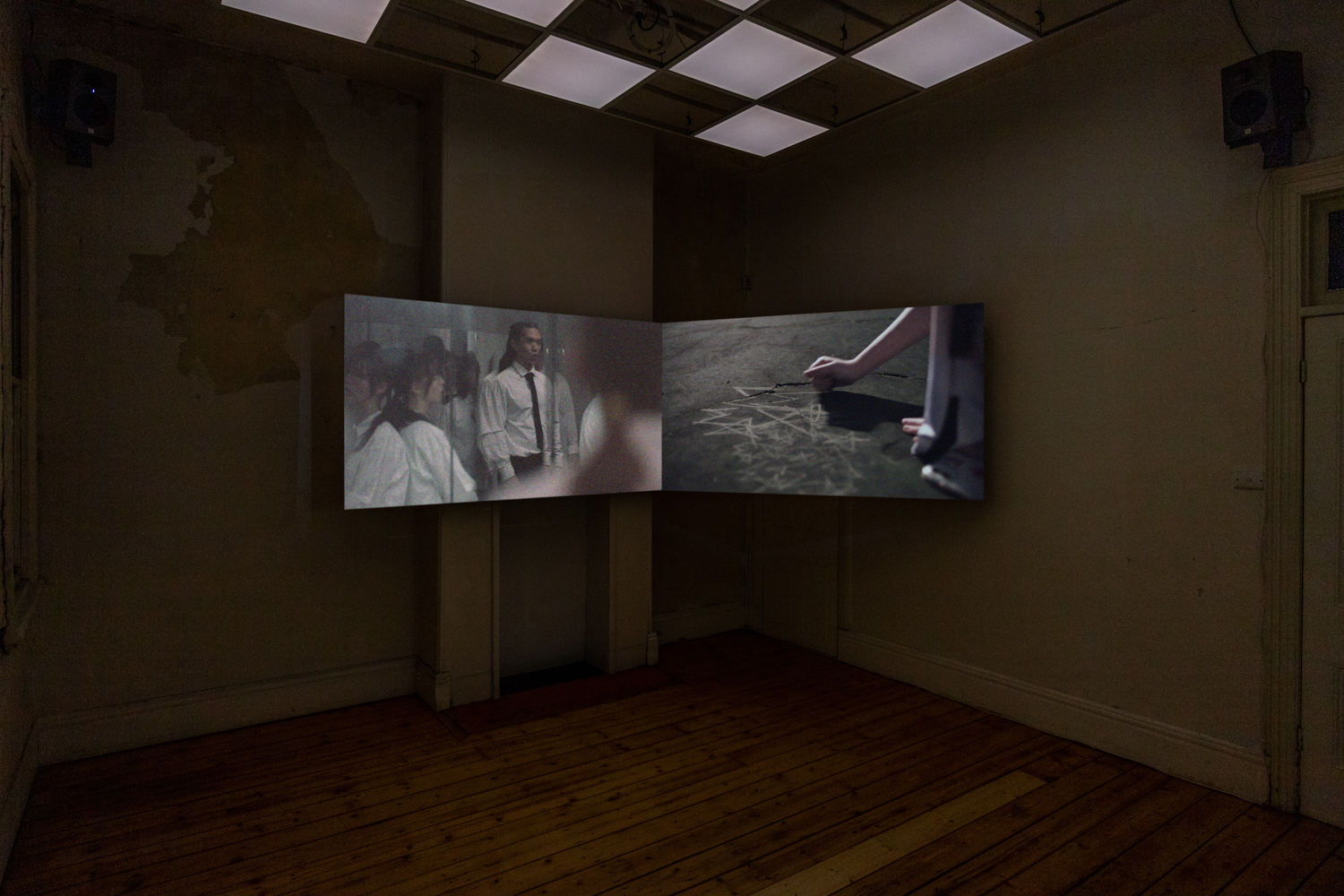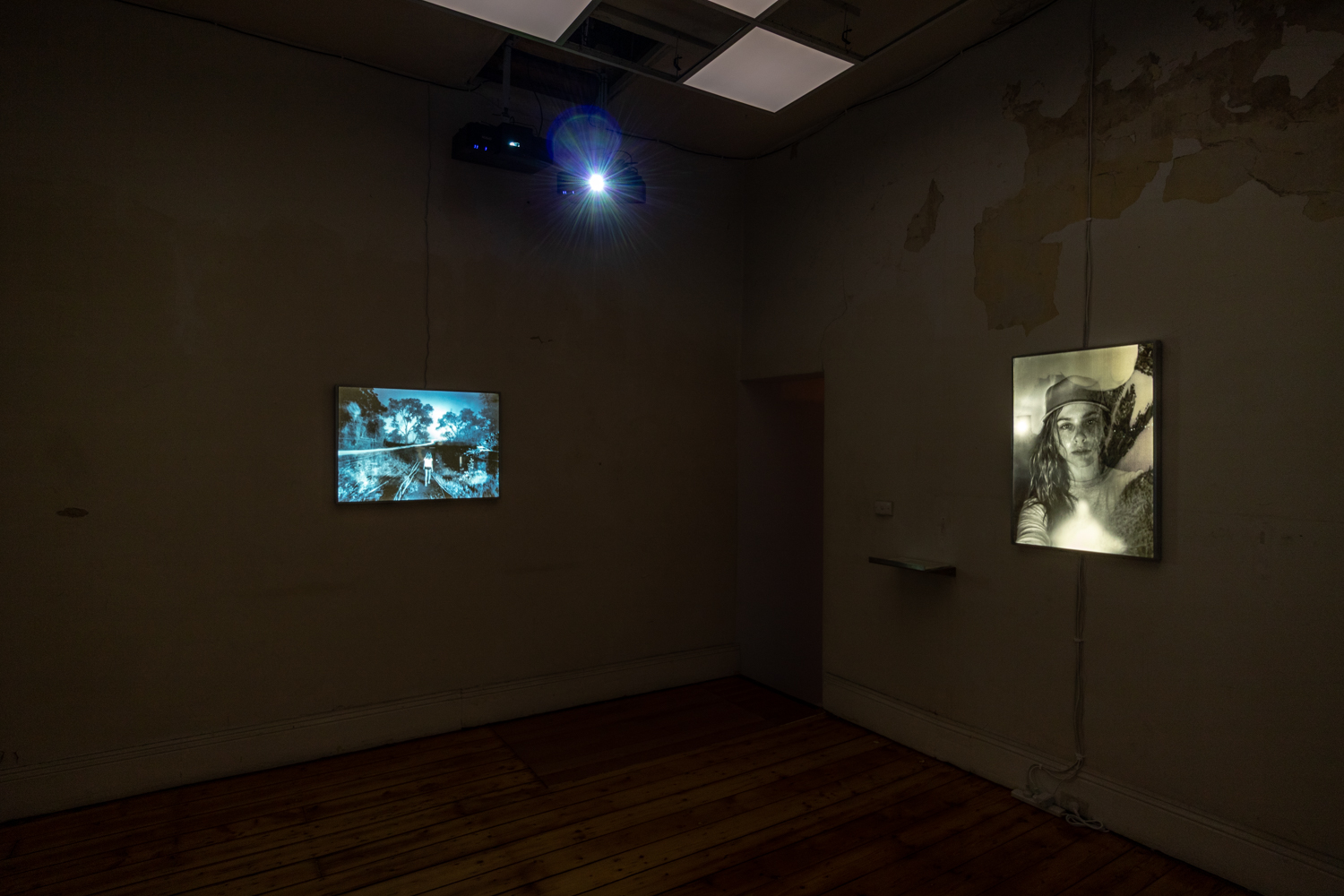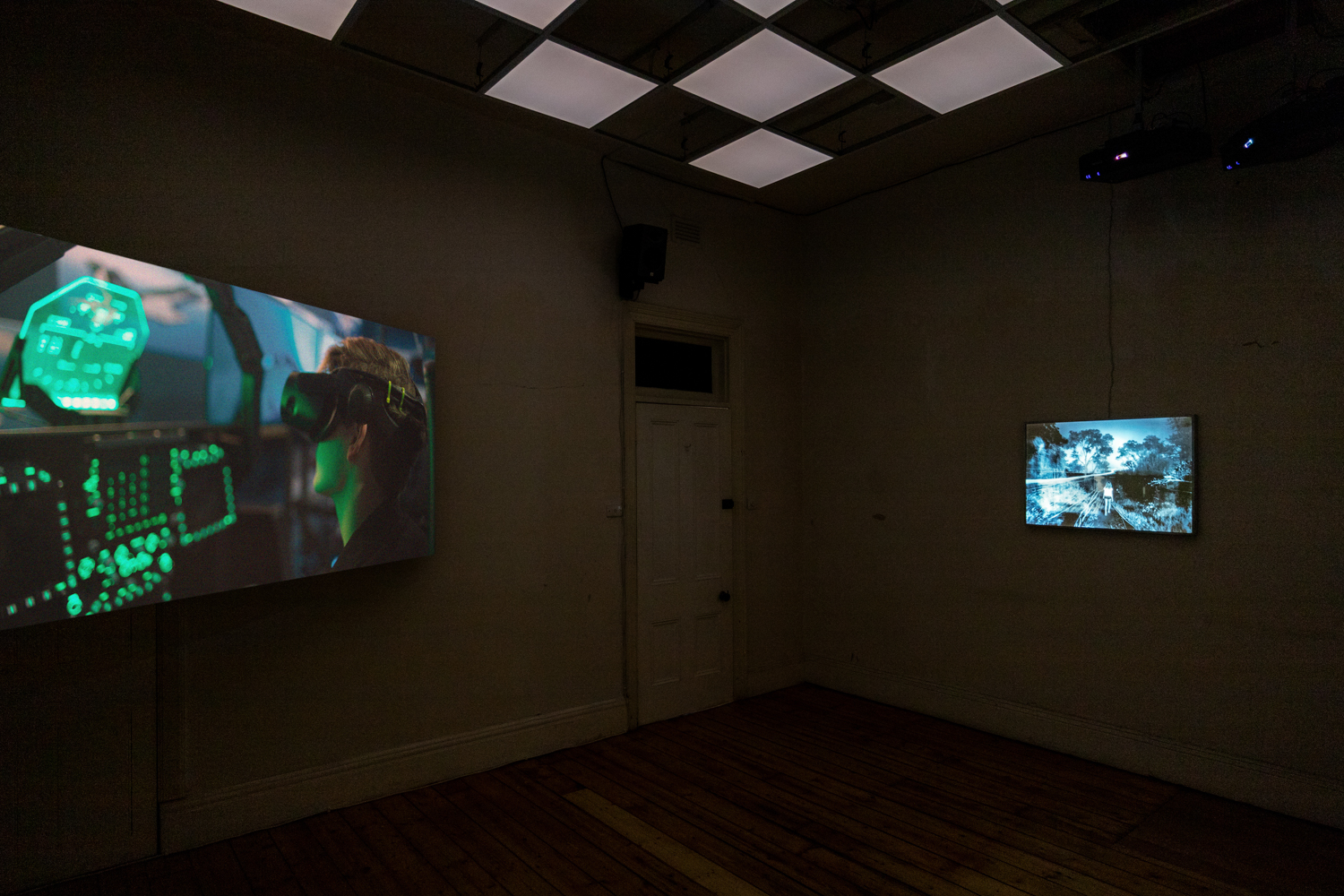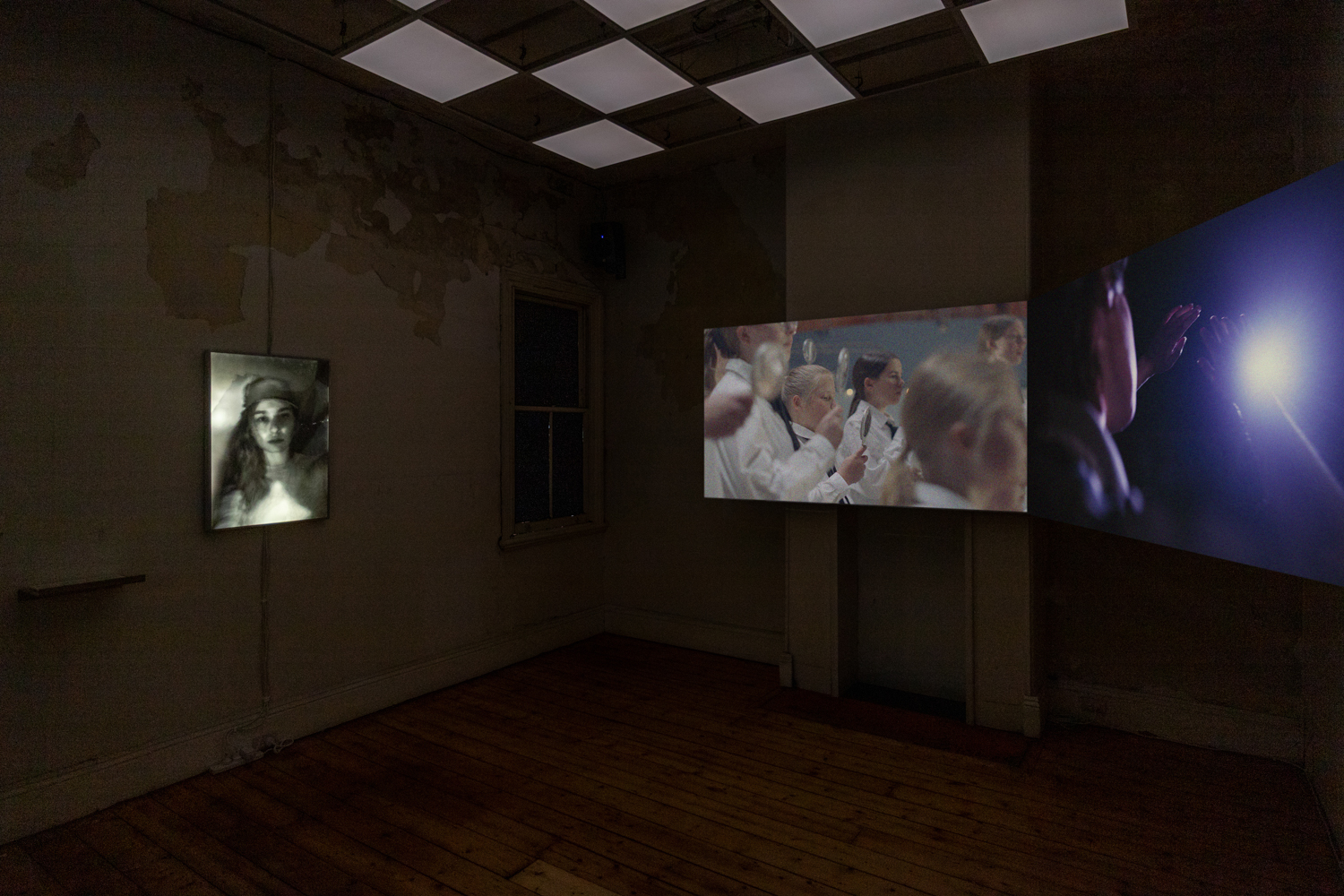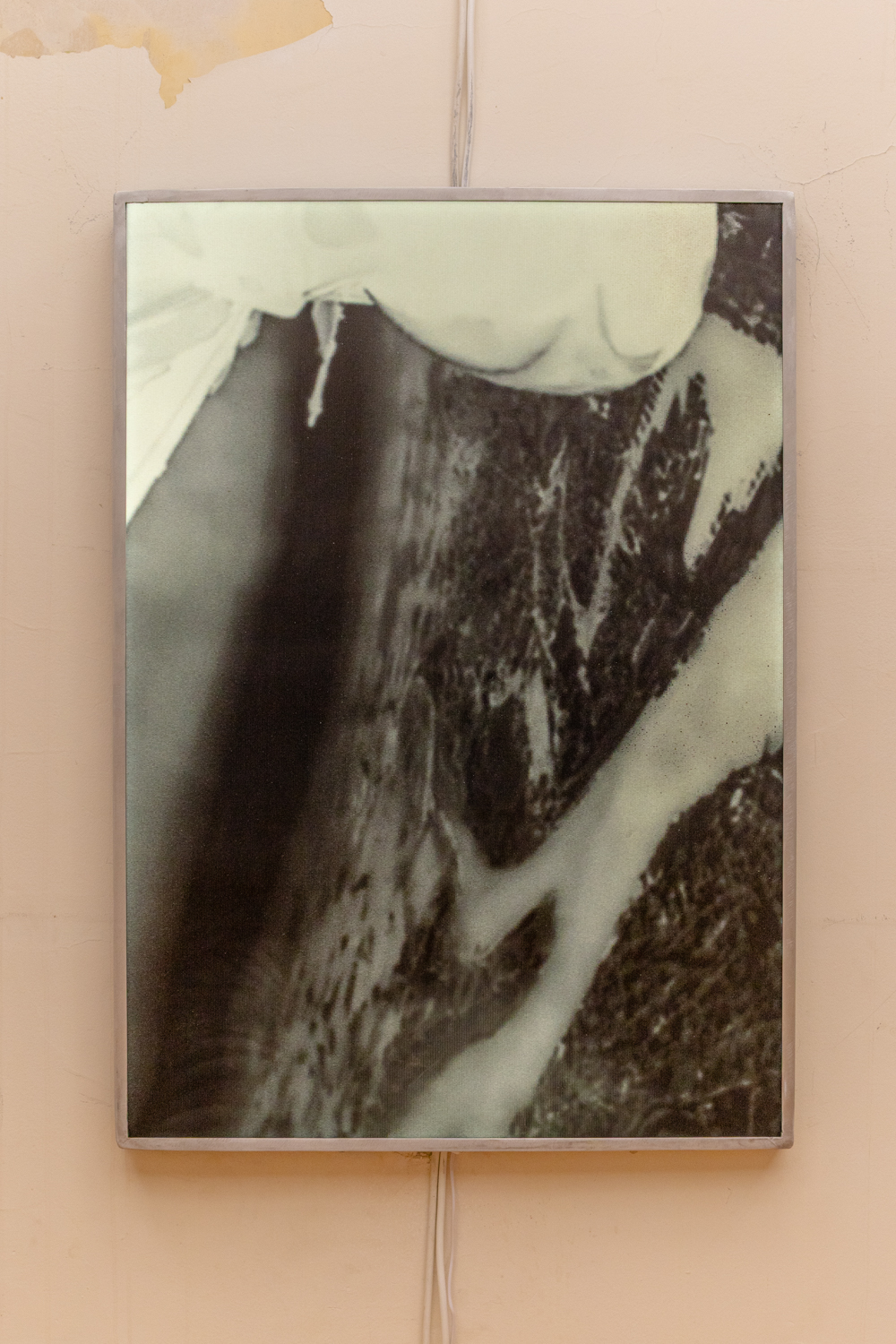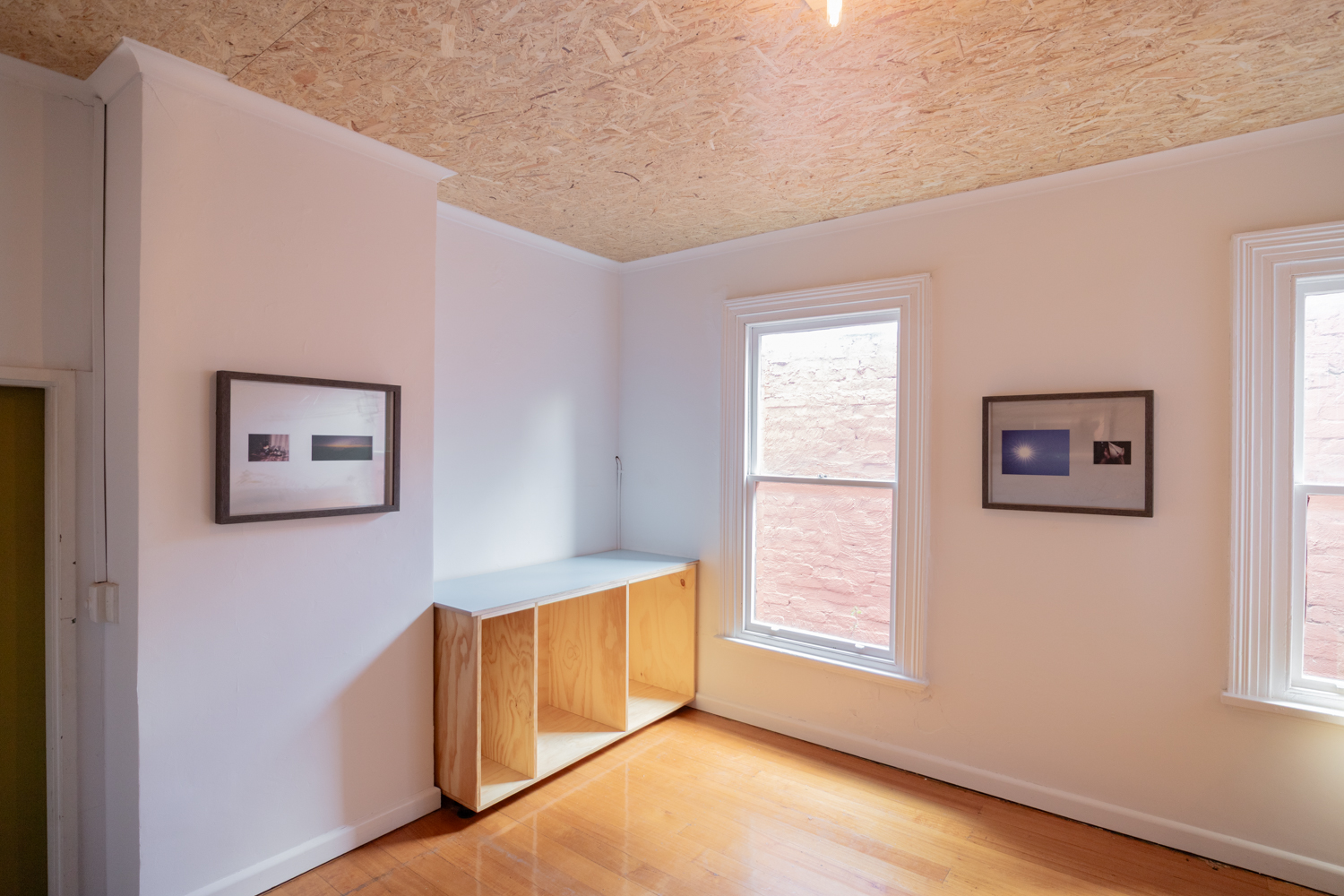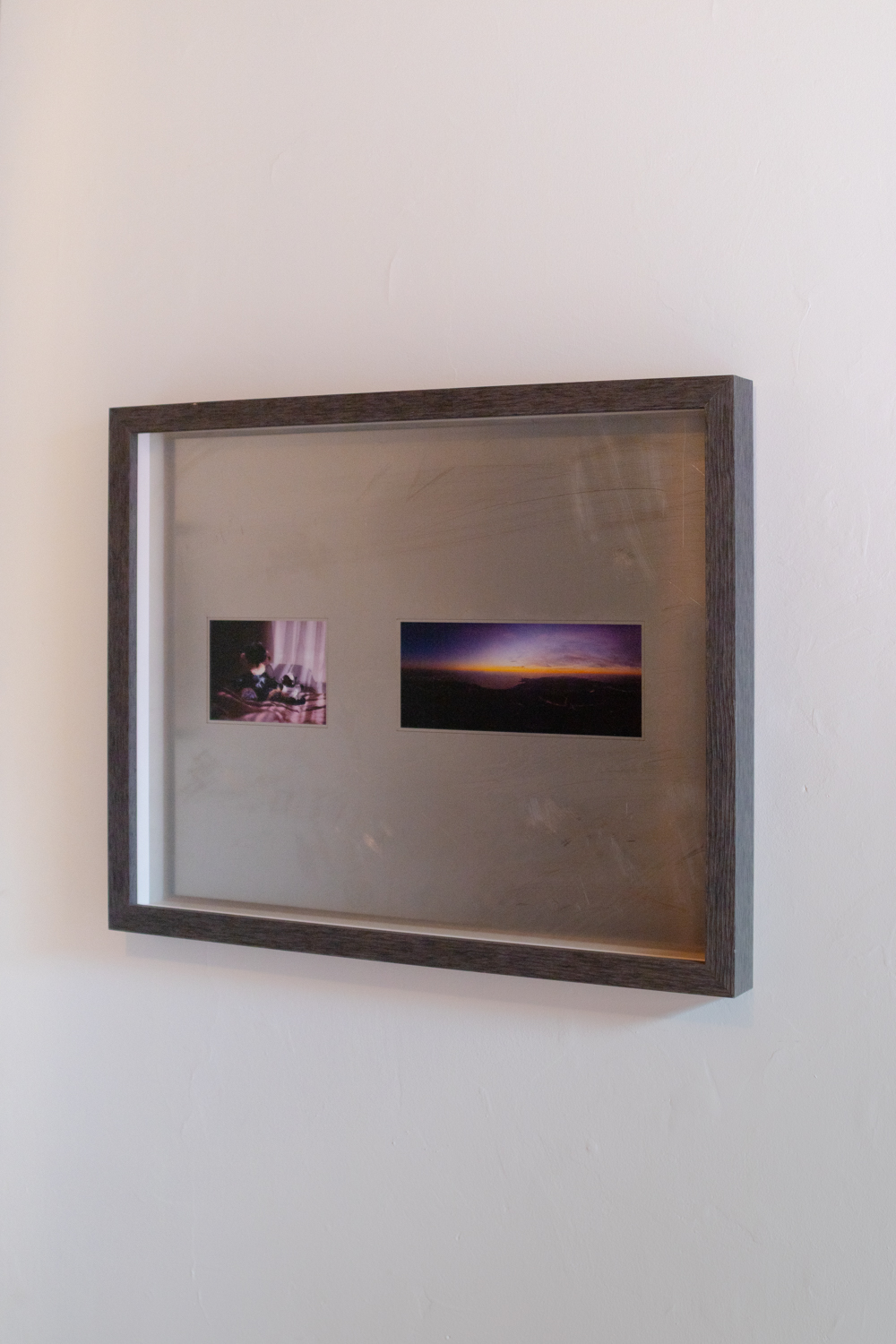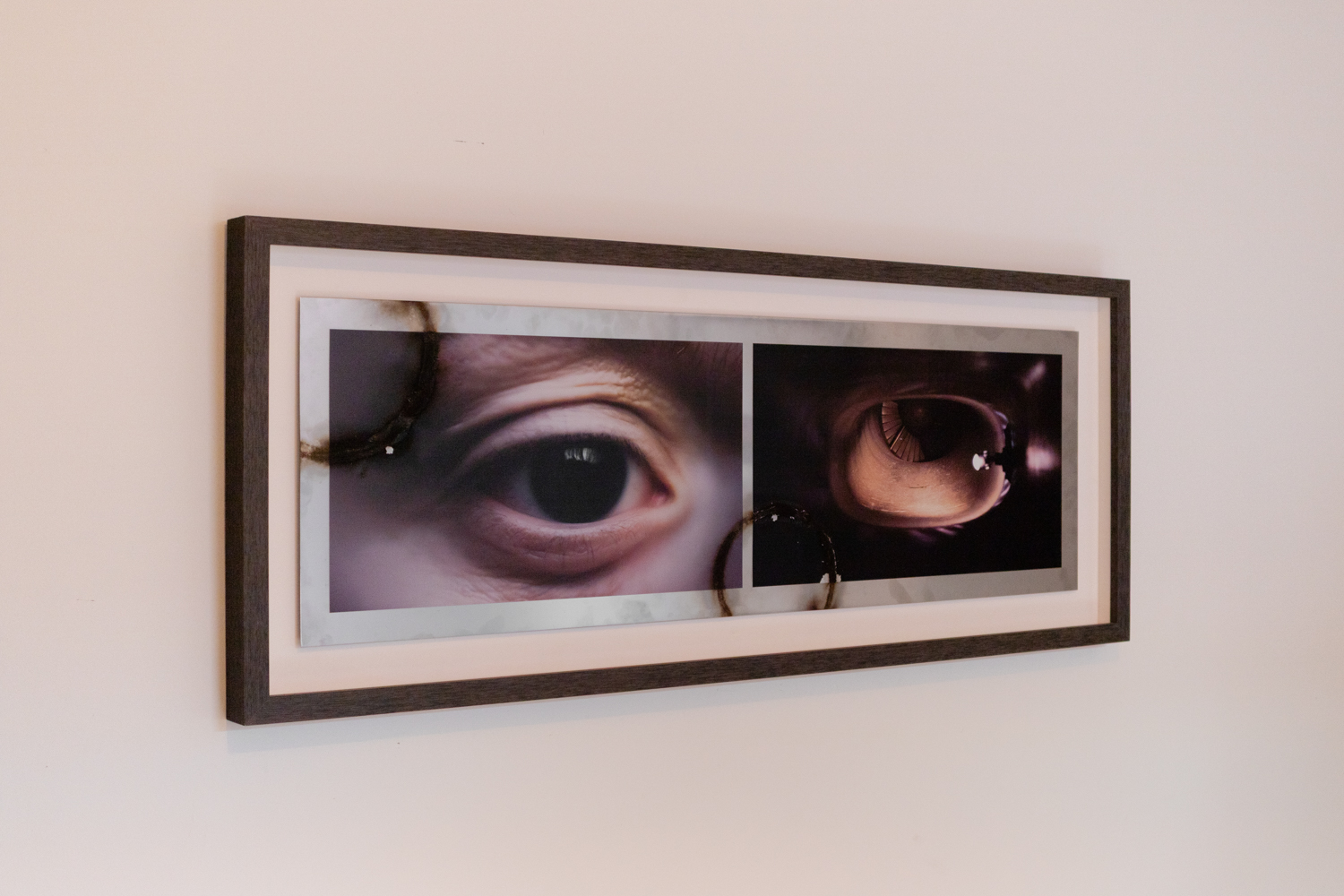Composition for Mnemosyne
Stanton Cornish-Ward & Alexandra Kirwood
17.10.2025 - 01.11.2025
FL 1, 130 Bridge Road
Richmond, 3121
Stanton Cornish-Ward & Alexandra Kirwood
17.10.2025 - 01.11.2025
FL 1, 130 Bridge Road
Richmond, 3121
Haydens is pleased to present Composition for Mnemosyne, by Stanton Cornish-Ward and Alexandra Kirwood, the inaugural exhibition in our new Richmond gallery. Join us on Friday the 17th of October from 6 - 8 pm for the first screening in Melbourne of Composition for Mnemosyne.
Composition for Mnemosyne (2024) consists of a two-channel video artwork and five wall works, made in response to the artist's time in Newcastle as part of The Lock-Up's Artist in Residence program. Rooted in an exchange between human experience and advancing Al systems, the work reflects on synthetic media and Newcastle's ambient technological infrastructure. It examines the reciprocal relationship between humans and pervasive Al technologies, revealing how they shape, and are shaped by, our environments and perceptions. Avoiding a didactic approach, the series of works invites viewers to consider their own entanglement with rapidly advancing technology.
The first video channel features The Hunter Singers, a Newcastle youth choir directed by Kim Sutherland (OAM) and conducted by Charissa Ferguson, performing an Al-assisted score by long-time collaborator of the artists, Mitchell Mackintosh. Using their voice and hands they emulate synthetic sounds transforming them into a choral performance that explores the way new technology is not only reshaping the visual landscape but becoming an embodied and mediated presence in the human body.
The second channel juxtaposes the choir's performance with scenes of a group of teenagers navigating Newcastle's shifting technological landscape. These spaces- decaying WWII gun encampments, abandoned barracks, and the stark presence of a fighter jet museum adjacent to Australia's primary F-35 training base- reflect cycles of progress intertwined with military influence. The F-35s, equipped with advanced Al-driven systems-a key advantage since the 2010s-train every weekday, looping over Newcastle's sky. With each step forward, the perception of the environment is reprogrammed, shaped by both the visible physical infrastructure and the invisible networks that redefine these spaces for each generation. The work underscores the ongoing give-and-take between technological innovation and human adaptation, reflecting on our deep entanglement with these systems.
The wall works extend the themes in Composition for Mnemosyne by merging photographic and synthetic imagery. Three works incorporate UV printed imagery on steel, their surfaces either burnt by homemade explosives or scratched to leave behind tags, both motifs in the film. Two additional lenticular works, composed entirely of synthetic imagery, depict a hypothetical, disembodied perspective that merges human vision with machine-driven overlays, offering an augmented view from both the ground and the sky.
Stanton Cornish-Ward is an artist and filmmaker from Boolroo/Perth and based in Naarm/Melbourne. Her work explores how advancing technologies mediate our understanding of history and shape collective memory and identity. Engaging with film, photography, and writing, Cornish-Ward addresses the complexities of human experience grappling with its next massive technological leap.
She has exhibited at the National Gallery of Victoria, The Lock-Up, Metro Arts, MARS Gallery, and Discordia Gallery. Her films 'LOCK' (2020) and 'In a World Full of Angels' (2022) have earned accolades, including 'Best Experimental Film' at the Cologne International Film Festival 2022, and 'Best Experimental Short Film' at Experimental Forum Festival L.A 2023. Her moving-image works have screened at festivals in more than fifteen countries across Australasia, Asia, Europe, & North America. Her work and writing has been published in Art & Australia, Art Asia Pacific, Un- Magazine, Do Not Research and SHOWstudio. Cornish-Ward designed and leads RMIT’s Communication Design studio “Unstable Images: AI, Art & Creative Practice”, and teaches “Media & Image” (Graphic Design, VCA) and “Art in Cinema” (Fine Arts, Monash). She will commence her MFA in Film under Prof. Omer Fast at the Hochschule für bildende Künste, Hamburg, in late 2025.
Alexandra Kirwood is a researcher, image-maker, and a former Researcher in Residence at ACMI X. Her creative practice research explores relationships between bodies and images in the context of art, fashion, performance, and digital technologies. She aims to question image consumption, the role of new technology, and digital representations of bodies to uncover the social implications of image-making.
She recently completed a Masters in Design at RMIT titled 'Time-Images & Digital Fashion Sculpture'. Since then, she has collaborated with Grimshaw Architects and OCTA to create large-scale site-specific public video works, including 'Floating Bodies' (2021) and 'Significant Surfaces' (2022), commissioned by the City of Melbourne and screened in Seoul for Frieze Festival.
Some career highlights include artist residencies at the Fremantle Arts Centre in WA (2024) and the Lock-Up gallery in NSW (2024), as well as a Researcher in Residency at ACMI X (2022). Alexandra is also part of HIBALL, a female-led production company specialising in moving images for the digital world, with work showcased at several BAFTA-qualifying festivals.
The first video channel features The Hunter Singers, a Newcastle youth choir directed by Kim Sutherland (OAM) and conducted by Charissa Ferguson, performing an Al-assisted score by long-time collaborator of the artists, Mitchell Mackintosh. Using their voice and hands they emulate synthetic sounds transforming them into a choral performance that explores the way new technology is not only reshaping the visual landscape but becoming an embodied and mediated presence in the human body.
The second channel juxtaposes the choir's performance with scenes of a group of teenagers navigating Newcastle's shifting technological landscape. These spaces- decaying WWII gun encampments, abandoned barracks, and the stark presence of a fighter jet museum adjacent to Australia's primary F-35 training base- reflect cycles of progress intertwined with military influence. The F-35s, equipped with advanced Al-driven systems-a key advantage since the 2010s-train every weekday, looping over Newcastle's sky. With each step forward, the perception of the environment is reprogrammed, shaped by both the visible physical infrastructure and the invisible networks that redefine these spaces for each generation. The work underscores the ongoing give-and-take between technological innovation and human adaptation, reflecting on our deep entanglement with these systems.
The wall works extend the themes in Composition for Mnemosyne by merging photographic and synthetic imagery. Three works incorporate UV printed imagery on steel, their surfaces either burnt by homemade explosives or scratched to leave behind tags, both motifs in the film. Two additional lenticular works, composed entirely of synthetic imagery, depict a hypothetical, disembodied perspective that merges human vision with machine-driven overlays, offering an augmented view from both the ground and the sky.
Stanton Cornish-Ward is an artist and filmmaker from Boolroo/Perth and based in Naarm/Melbourne. Her work explores how advancing technologies mediate our understanding of history and shape collective memory and identity. Engaging with film, photography, and writing, Cornish-Ward addresses the complexities of human experience grappling with its next massive technological leap.
She has exhibited at the National Gallery of Victoria, The Lock-Up, Metro Arts, MARS Gallery, and Discordia Gallery. Her films 'LOCK' (2020) and 'In a World Full of Angels' (2022) have earned accolades, including 'Best Experimental Film' at the Cologne International Film Festival 2022, and 'Best Experimental Short Film' at Experimental Forum Festival L.A 2023. Her moving-image works have screened at festivals in more than fifteen countries across Australasia, Asia, Europe, & North America. Her work and writing has been published in Art & Australia, Art Asia Pacific, Un- Magazine, Do Not Research and SHOWstudio. Cornish-Ward designed and leads RMIT’s Communication Design studio “Unstable Images: AI, Art & Creative Practice”, and teaches “Media & Image” (Graphic Design, VCA) and “Art in Cinema” (Fine Arts, Monash). She will commence her MFA in Film under Prof. Omer Fast at the Hochschule für bildende Künste, Hamburg, in late 2025.
Alexandra Kirwood is a researcher, image-maker, and a former Researcher in Residence at ACMI X. Her creative practice research explores relationships between bodies and images in the context of art, fashion, performance, and digital technologies. She aims to question image consumption, the role of new technology, and digital representations of bodies to uncover the social implications of image-making.
She recently completed a Masters in Design at RMIT titled 'Time-Images & Digital Fashion Sculpture'. Since then, she has collaborated with Grimshaw Architects and OCTA to create large-scale site-specific public video works, including 'Floating Bodies' (2021) and 'Significant Surfaces' (2022), commissioned by the City of Melbourne and screened in Seoul for Frieze Festival.
Some career highlights include artist residencies at the Fremantle Arts Centre in WA (2024) and the Lock-Up gallery in NSW (2024), as well as a Researcher in Residency at ACMI X (2022). Alexandra is also part of HIBALL, a female-led production company specialising in moving images for the digital world, with work showcased at several BAFTA-qualifying festivals.
